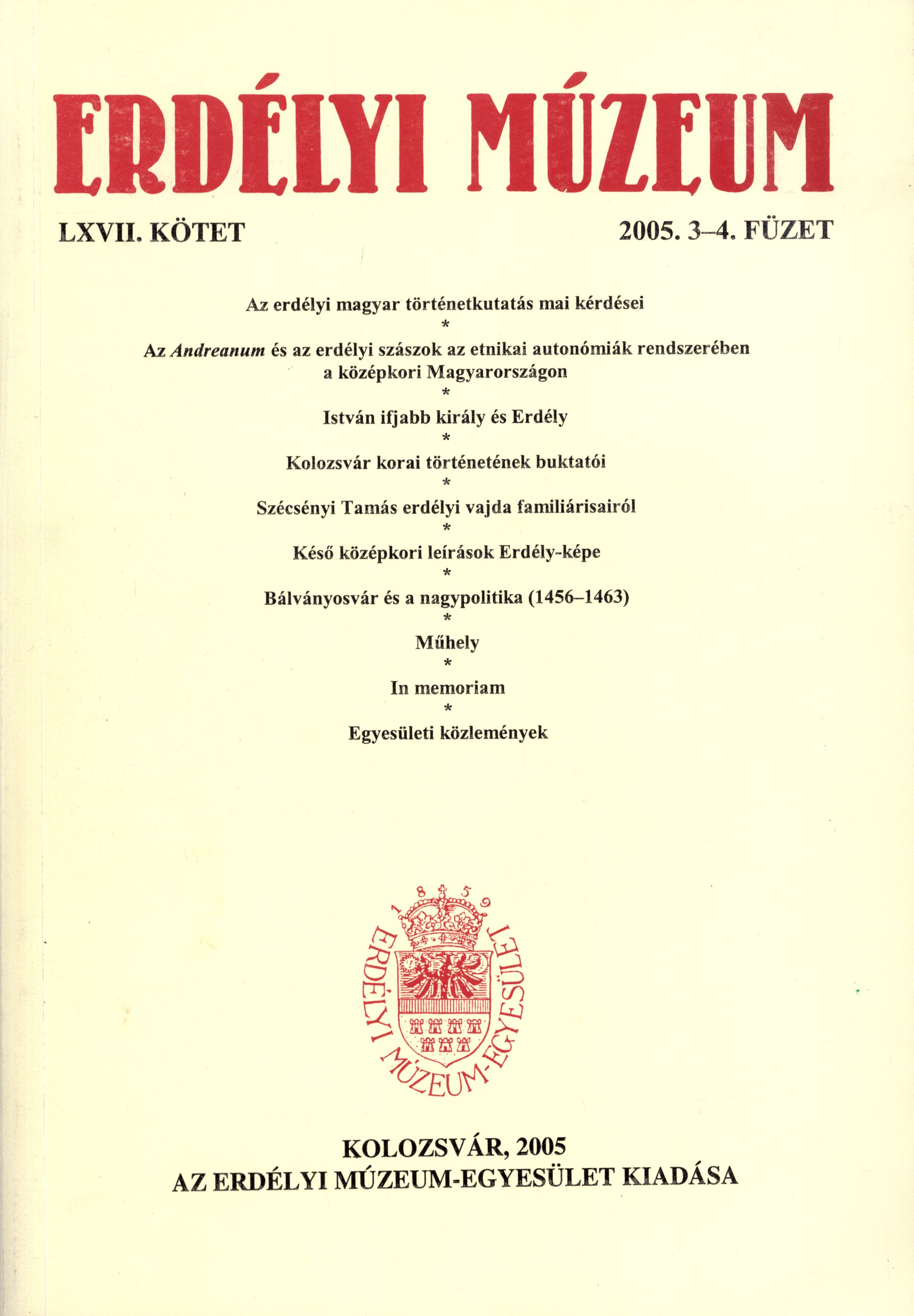Bálványosvár és a nagypolitika (1456–1463)
Castle Bálványos (Unguraş) and the High Politics (1456–1463)
The Struggle of the Families Dezsőfi de Losonc and Várdai de Kisvárda for the Domain and Castle
Author(s): Géza HegyiSubject(s): Political history, Social history, 15th Century
Published by: Erdélyi Múzeum-Egyesület
Keywords: Castle Bálványos; Dezsőfi family of Losonc; Várdai family of Kisvárda; medieval Hungary; aristocracy
Summary/Abstract: According to the conclusions made by Hungarian specialists, the local (regional) power of aristocracy from medieval Hungary was based on three pillars: the court offices they performed; their domains and castles; their suite based at the institution of familiaritas (a kind of vassality). This study – reconstructing a concrete instance – tries to follow the interactions between these factors and to introduce the reader in the strange world of medieval Hungarian noble society with its legal procedures, practical solutions, family links, policies and rivalries. One of the conclusions I made, is that from these factors the primary and the most active one is that of court connections of aristocratic people and their political roles. They had chances to obtain new estates (conserving they actual power) and to protect their interestes only being in this status. Another conclusion is, that political changes on the national level (in the royal governement, for ex.) had an instantly effect on the regional situation, on the fate of some estates, on the family policies and regional balance of forces. The family Dezsőfi de Losonc (a powerfull aristocratic family with traditional interests in Transylvania) wanted to get castle Bálványos (on the actual area of Romania, northern part of Transylvania) and its domain for a long time, because they were after local hegemony in this part of the kingdom. Finally they reached this purpose only partly, because the donation (12th November 1456) was made for the Várdai family, too (coming from the middle nobility, entering the royal court only for a few years). But the resistance of the fomer possessor’s daugthers and frantic happenings on high political level (the coup d’etat made by László Hunyadi and the rebbellion started by his party, after he was executed) stopped both of the families to enter the real possession of their own domain (there existed a local rivalry between the Hunyadi and Dezsőfi families). Finally – seing that legal processes cannot solve the situation – they succeeded to get the castle (only on the end of 1457) by corrupting its castellan. Than was following another sudden change: Mathias Hunyadi was elected as king and he donated the castle to his relative: John Geréb de Vingárd who occupied the domain by force. The two damaged families started a long struggle for their own legal possession. Because of the political instability of the first few years of king Mathias’s reign, this process followed a very fluctuating way. Only in 1461 they fell in agree with Geréb and got back the castle. The Dezsőfi family didn’t possess this disputed domain for a long time: in 1467 they revolted against king Mathias and their estates were confiscated.
Journal: Erdélyi Múzeum
- Issue Year: LXVII/2005
- Issue No: 3-4
- Page Range: 105-130
- Page Count: 26
- Language: Hungarian

